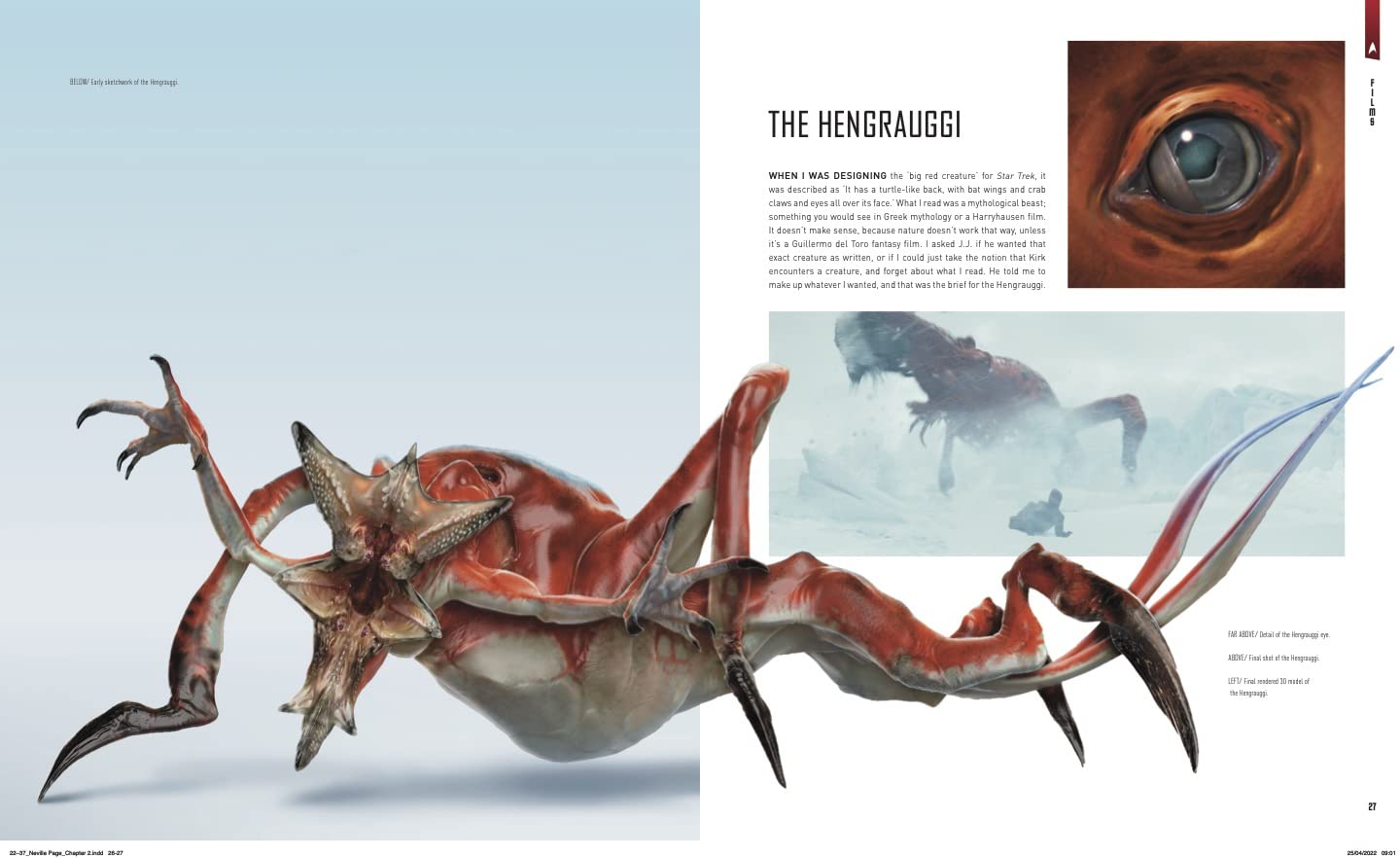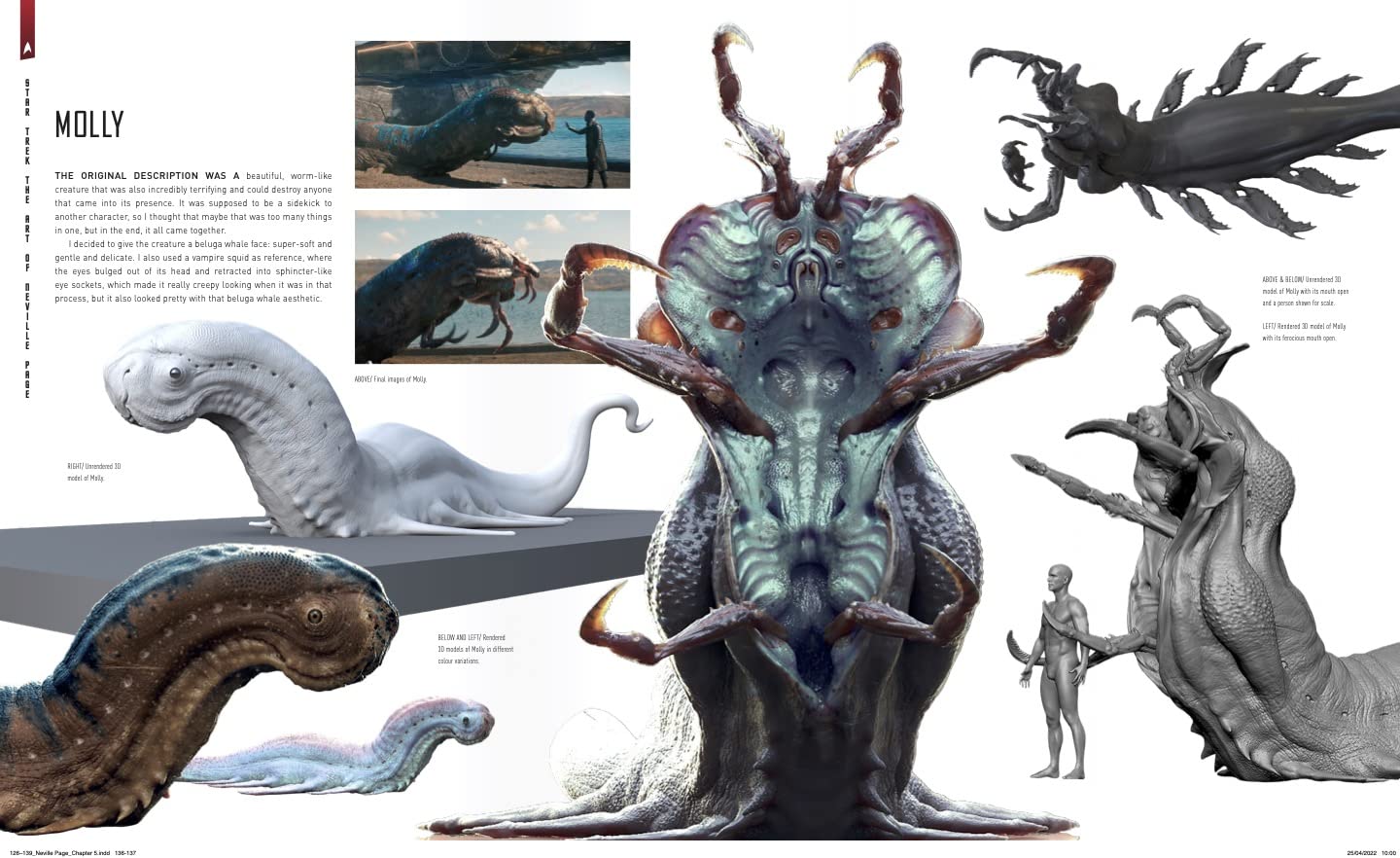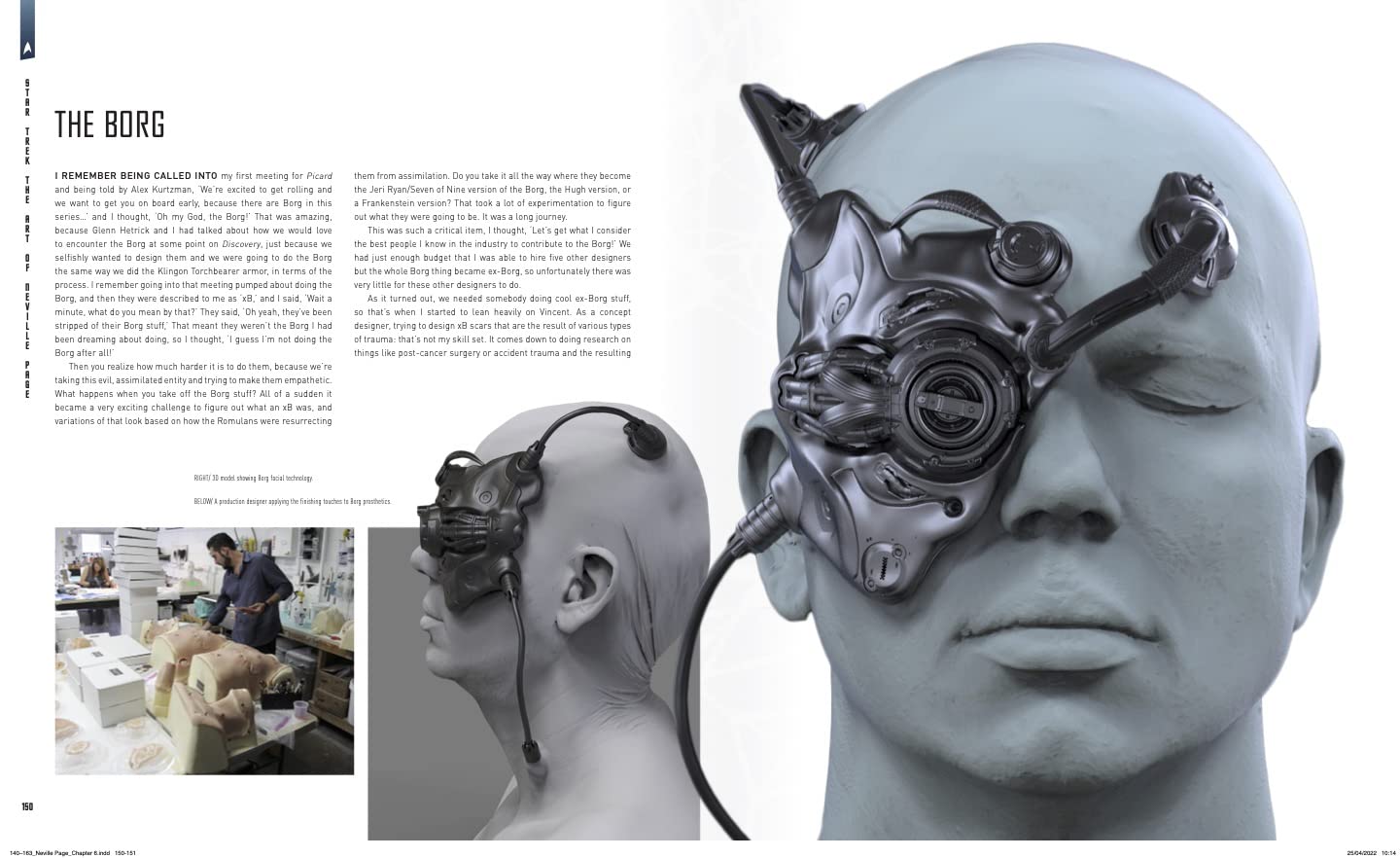Titan Books’ Star Trek: The Art of Neville Page feels like you are spending a few hours with the designer in his studio. Reading this book, which includes insights into Neville Page’s designs for the Kelvin Timeline movies, Star Trek: Discovery, and Star Trek: Picard, evokes the feeling of touring around Page’s studio as he opens drawers of illustrations and talks you through what you’re seeing while you do.
These Star Trek art books have been a highlight of the Star Trek non-fiction publishing line over the last few years, providing so many wonderful insights into the incredible artistry behind Star Trek productions both young and old. The line of books has profiled artists like John Eaves and Dan Curry, shows like Star Trek: Discovery, and movies like Star Trek: The Motion Picture. And now Neville Page takes center stage – largely in his own words (and joined by writer Joe Nazzaro).

Page has had a significant role in shaping the aesthetics of modern Star Trek, starting with his contributions to the 2009 Star Trek reboot film. His iconic creature and alien designs have given birth to Star Trek characters whose looks will be remembered forever, including Saru from Discovery and Jaylah from Star Trek: Beyond — though Page’s work in the Star Trek franchise has also not been without its controversies. While it was Discovery originator Bryan Fuller who mandated a significant update to the Klingon look in the early days of that series, it was Page who developed and defined the new look that landed among audiences with decidedly mixed results.
The Art of Neville Page is exactly that: an art book, showing many of the designs Page has created for the different modern Star Trek iterations. These include a huge number of concept designs that show the evolution of different ideas and how they came to be. Page also offers reflections along the way about each of the character, species, or prop designs that are featured in the book, and discusses how each came to be, the design choices at play, and some of the constraints faced by the artists in making each piece a reality.

One big frequently revisited theme is just how much budget can significantly constrain the creative vision for what creatures or aliens can look like. Comparing pictures in the book of the final piece — like the design for the Klingon monks on Boreth in Discovery’s “Through the Valley of Shadows” — with the concept drawings it is often stark how much bigger the ideas started than the realities of budget allowed for, even on productions that look as good as Star Trek. Page even reflects in a few places in the prose of the book about examples of times when his ambition had to be curtailed by production realities.
There is some fun stuff and some great art in here, along with just enough interesting anecdotes to weave everything together. I did feel like I wanted a little more in places, though. A lot of the decisions about what to include in the book are things Page has talked about at length in previous interviews, and so I didn’t feel like I had learned too much more about some of his work than I already knew from following him at conventions and interviews.

And while The Art of Neville Page is probably not the right place for critical reflection about working on Star Trek, and how to balance a designer’s creative voice with strong pressure and forces to align with old designs, I found the most interesting parts of the prose were the places where Page began to wander in that direction. Page is the man who re-designed the Klingons in a way that many fans, even myself, didn’t respond to. It was a bold creative choice, but ultimately one that the production pulled back from. And there are hints when discussing developing new designs for Andorians, Tellarites, Hirogen, and Romulans where Page touches on these tensions, but I would have liked to see more of a discussion and unpacking of that.
Page’s creative philosophy is well articulated in the book, but it’s also one that stands a bit at tension with what many Star Trek fans want. And I think I would have liked to have seen more discussion about that, even if Page’s philosophy and viewpoint are divergent from my own.

Having said that though, The Art of Neville Page is a celebration of the artist and designer’s significant contributions to Star Trek, and seeing his design philosophy and work in action is a real treat. It’s fun to see how much energy and effort is put even into the smallest element of the show or for designs that will get only a brief second or two of screen time. Page brings an attention to detail and a commitment to having all of his design choices make sense that adds a significant sense of realism and depth to the Star Trek universe.
Even with some of his controversial design decisions for classic Star Trek races, the franchise has been very lucky to have access to the skills and talents of Neville Page — and this hardcover puts those talents on full display.
![]()
Star Trek: The Art of Neville Page is in stores now.
